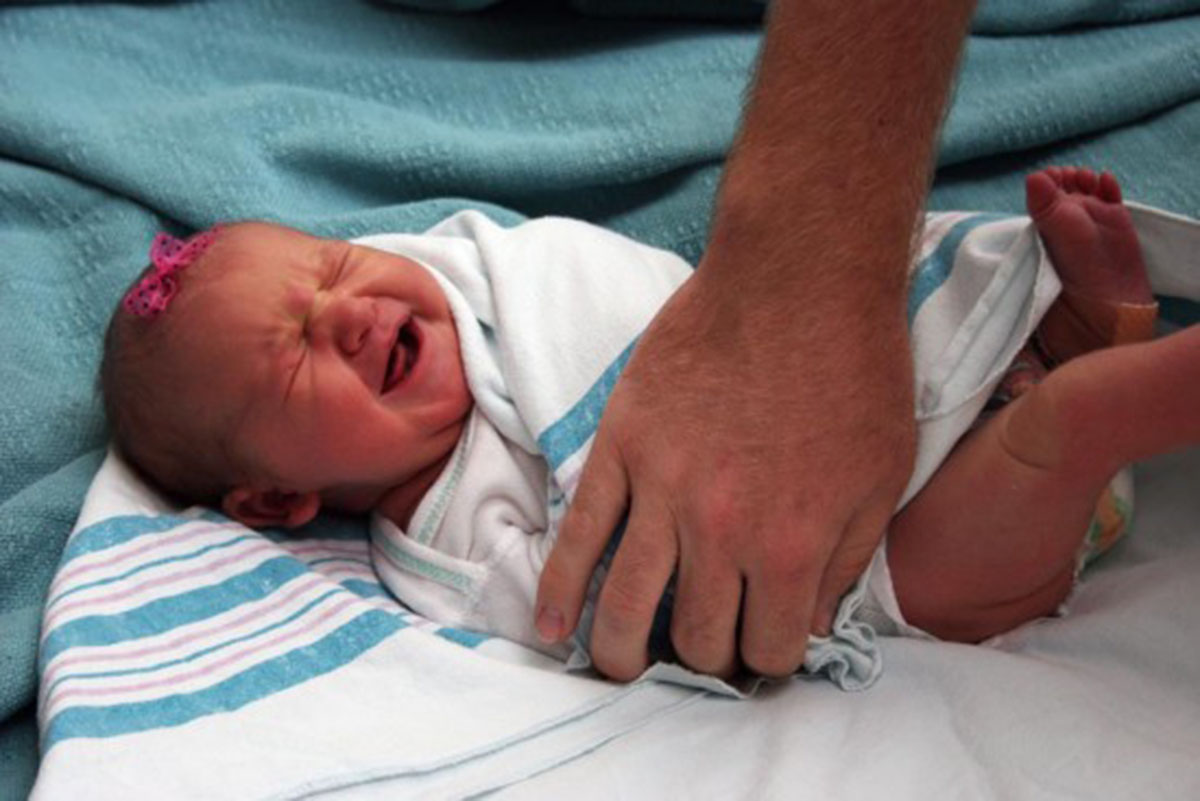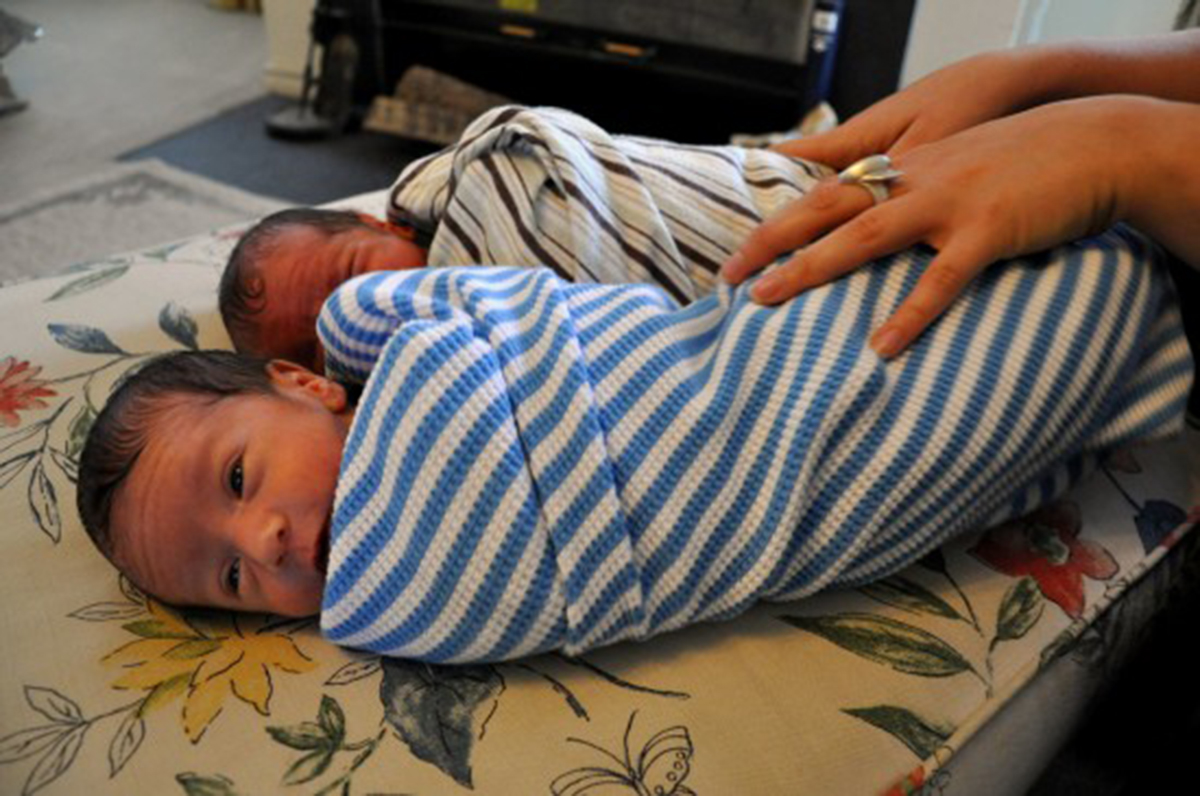Swaddling, or wrapping babies in blankets really tightly, has increased in popularity in recent years. Is it the perfect way to calm your cranky baby with colic down, or could the practice be dangerous? Many parents are enthusiastic about the benefits of swaddling, but not everyone gives it it positive reviews.

What Is Swaddling?
Swaddling is the practice of wrapping newborns and older infants tightly in blankets or specially designed swaddling cloths that make it even easier to wrap babies snugly. Both the baby's arms and legs are usually bound. Swaddling has traditionally been practiced in many countries, and continues to be part of many people's cultural traditions today.
Swaddling has also become popular among some modern western parents in recent years — including Beyoncé, Sandra Bullock and Kate Middleton.
The practice is said to have numerous benefits. Do you have a newborn who is frequently woken up by her own waving arms, has colic, or just can't seem to fall asleep? You may have heard that swaddling can help with any of these problems and feel encouraged to wrap your baby tightly.
You can choose to use muslin squares, blankets, or special swaddlers to wrap your baby. Swaddling does seem to soothe many babies and you may find that yours is sound asleep by the time you finish wrapping.
Protect Your Baby's Hips
If you've seen swaddling in the news recently, it won't have been because celebrity who most recently gave birth decided to wrap her baby up snugly, however — rather, because a British expert warned against the practice.
What could possibly be wrong with something that seems to be comforting to so many babies?
British orthopedic surgeon Professor Nicholas Clarke might not be the expert on how to get your hysterically crying but exhausted baby to settle down, but he does know all about hips and that is why he has been in the news to tell you that swaddling might cause more problems than it solves.
Writing in the journal Archives of Disease In Childhood, Clarke points out that swaddling restricts a baby's movement in a way that could really harm the hip joint: "In order to allow for healthy hip development, legs should be able to bend up and out at the hips. This position allows for natural development of the hip joints."
Andreas Roposch, a consultant orthopaedic surgeon at the famous Great Ormond Street Hospital in London, believes that babies should never be placed with the legs in a "purely straight position" for any length of time.
He actually thinks that swaddling should be avoided altogether, since there are no health benefits but indeed "a risk for adverse consequences of the growing and often immature hips". While your baby's hips are not the only concern when it comes to swaddling — the British Royal College of Midwives also warns against overheating and crib death — they are certainly important enough to make sure your baby's legs aren't extended straight down for very long.
Read More: Hip Dysplasia - An Overview
Hip dysplasia is a condition in which the bones of the hip joint are aligned incorrectly. It can be congenital (present at birth) or acquired, and range in severity from mild to truly disabling.
Hip dysplasia is unlikely to cause your baby any significant problems, but it will lead to pain, arthritis, and severely worn out hips later in life if left untreated.
Hip Dysplasia Screening And How To Soothe Your Baby Safely
Hip Dysplasia Basics
Hip dysplasia screening is a routine part of early pediatric care in some countries. In others, screening is only conducted in the presence of risk factors (a family history, being a girl, other orthopedic problems and a breech birth). Hip dysplasia needs to be taken seriously, as one in every 20 full-term newborns will show some sign of hip instability. Two or three in every thousand will need treatment.

Parents should look out for asymmetrical creases in the skin of their baby's bottom, one leg that appears to be shorter than the other, clicking sounds in the hips, or legs that can't be spread fully. In severe cases, toddlers will limp or waddle when they start to walk.
Both surgical and non-surgical treatment options are available for hip dysplasia. The various non-surgical methods focus on placing the baby in a position that allows optimal development of the bones in the hip joint.
As an adult who received non-surgical treatment for hip dysplasia in infancy, I am keenly aware that it does not always work. I have arthritis of the hip, live with pain and a limp, and am currently considering surgical options. Professor Clarke's recommendation to make sure your baby's hips are not held in straight, extended positions for prolonged amounts of time was made for a good reason.
Hip dysplasia is not a condition you want to encourage or exacerbate.
How To Soothe Your Baby Safely
The good news is that you can protect your baby's hips and still soothe her. You could try swaddling only the arms and making sure that your baby's legs have enough space to bend and move. You could also place two cloth diapers of the prefold type between your baby's legs to ensure they are spread, and then swaddle your baby in the traditional manner.
Read More: Babywearing: Physical And Emotional Benefits
Those with inconsolable, colicky babies may also like to try wearing their little ones. I'd particularly recommend a mei tai baby carrier for this purpose. A mei tai is a traditional Asian carrier that is made up of a rectangle-shaped "blanket" with four fabric straps that tie your baby around the parent's body. The mei tai spreads a baby's legs in a way that is particularly beneficial for infants with hip dysplasia.
- Photo courtesy of Brian by Flickr : www.flickr.com/photos/makelessnoise/855667441/
- Photo courtesy of Andria by Flickr : www.flickr.com/photos/fauxlaroid/4088140608/

